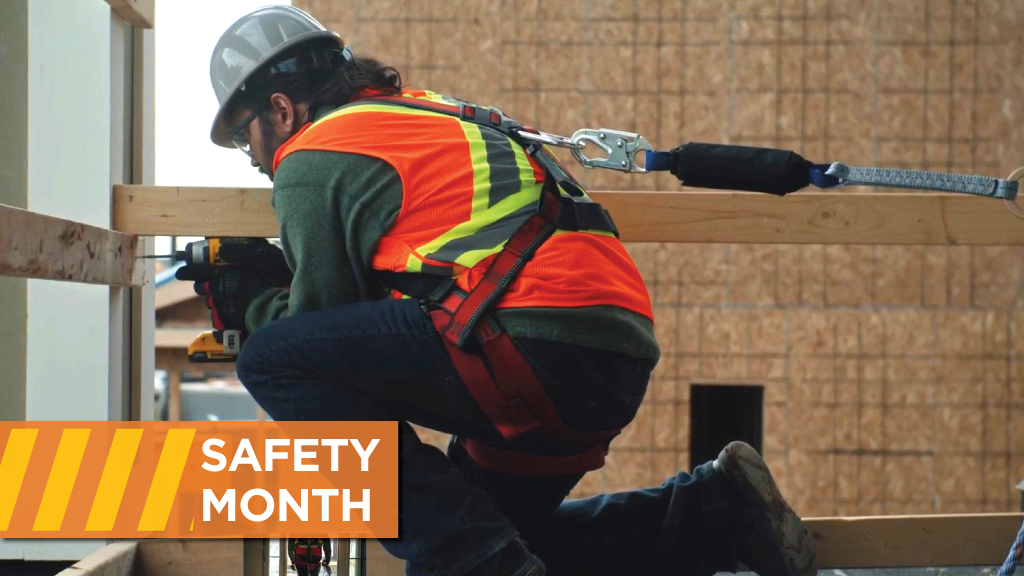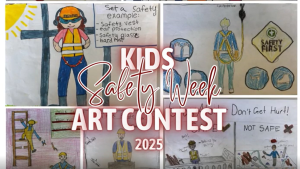The Infrastructure Health and Safety Association (IHSA) has delivered a comprehensive new Fall Prevention Toolkit for Falls Awareness Week May 6 to 10 as part of its continuing efforts to support the Ontario government’s falls compliance efforts.
Falls prevention and struck-by awareness are the two main focuses of the IHSA’s Safety Month campaign with new materials also created for the struck-by messages. The IHSA has also created a set of three poignant videos that will be part of a social media campaign.
IHSA vice-president of market development Ken Rayner explained the theme of the videos, Keep Your Promise, reflects the familiar but important theme that everyone in the sector wants workers to return home safely at the end of the day.
“You’re making a promise to your loved one to say, ‘Hey, we’re going to do something after work’ or making a commitment to the home,” Rayner said. “The only way you do that is if you work safely during the day, and so that’s the intent of those videos. What we really wanted to do was show the positives in a touching, heartwarming way.”
One of the videos shows an electrical worker leaving his family early in the morning and doing everything right all day including paying attention to a toolbox talk. Another has two colleagues driving to work together and using all the necessary gear and tools while working at heights, with the reward being a game of basketball together with buddies after work.
The social media campaign starts later on in May said Rayner: “We want them to see it multiple times to really resonate that message of, ‘You’ve got to be mindful of your own health and safety.’”
IHSA director of stakeholder engagement Jennifer McKenzie noted there have been significant regulatory changes in working at heights recently, and health and safety advocates are also assessing the recommendations of recent coroners’ juries that have focused on ensuring safety messages reach all employers and workers.
Rayner noted of the IHSA’s membership of 800,000 workers at 155,000 firms, 90 per cent have fewer than 20 employees and 80 per cent have fewer than five, so the drive to reach workers requires diverse strategies. The IHSA has produced a batch of new YouTube video safety talks and has embraced reels technology.
“We’re trying to really look at how do we get to them,” said McKenzie. “How do they learn? What’s going to make them learn? What’s going to make them change their perspective?”
One recent podcast features an interview with the family of a worker who died in a construction mishap at Toronto’s Billy Bishop Airport.
“It’s absolutely heartbreaking,” said Rayner.
The goal is to ensure “people are aware of not only the resources and the tools that the IHSA and the ministry provide but also consequences when either you or your employer isn’t doing right by you in terms of ensuring you’re safe at work.”
The free falls toolkit features safety talks, forms, checklists, articles, advisories and posters with different activities for each of the five work days.
Day one is the kickoff with a focus on general fall-related safety hazards; day two targets falls from ladders; day three focuses on slips, trips and falls down stairs; day four features falls from roofs and heights; and the fifth day encourages a discussion of falls from scaffolding and suspended work platforms.
Struck-by Awareness Week was held just before Safety Month, starting the week of April 16.
McKenzie said the IHSA receives input from employers, workers, ministry inspectors and specialists. The IHSA’s labour-management network comprises 55 committees and there are 26 training sector committees for the different trades.
One gap that has been regularly identified, and thus is being addressed in the falls toolkit, is proper use of a self-retracting lifeline.
“We have legislation, we have the training. They know they need to tie off,” McKenzie said. “But they’re still doing it incorrectly, which is still allowing the fatalities to occur.”
Follow the author on X/Twitter @DonWall_DCN.




Recent Comments
comments for this post are closed